Gordon G. Chang's Blog, page 8
December 7, 2015
Kim Calls First Party Congress in 35 Years
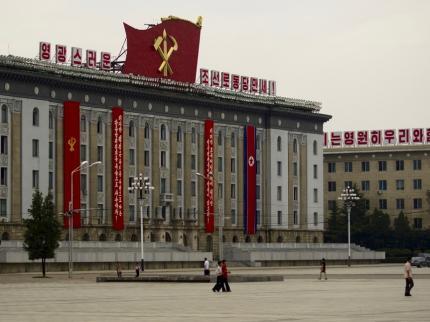
At the end of October, North Korea’s official Korean Central News Agency announced that the ruling Workers’ Party will hold its next congress in May 2016. The congress last met 35 years ago, in October 1980, during the reign of Kim Jong Un’s grandfather, Kim Il Sung.
KCNA, with typical grandeur, announced that the meeting reflected “the demand of the party and the developing revolution that witness epoch-making changes in accomplishing the revolutionary cause of Juche, the cause of building a thriving socialist nation.”
There is no indication of what will be on the agenda, and Korea analysts know they will learn about that only when the congress finally meets. After a month of consideration, however, they have reached a basic consensus about what the holding of the congress means: that the party has consolidated power at the expense of the Korean People’s Army, and that Kim Jong Un, the country’s youngish ruler, has taken full political control of the regime.
Neither conclusion is unreasonable. Kim “would not hold a party congress if he were not certain he could control even the smallest detail,” says Ruediger Frank of the University of Vienna in an interview carried by German broadcaster Deutsche Welle. “The situation in North Korea looks relatively stable.”
Frank, perhaps the first Korea watcher to notice that the death of Kim Jong Il in December 2011 resulted in a political resurgence of the party, makes a cogent case that Kim Jong Un has gained control of regime elements. Yet whether he is correct on this score or not—and a few analysts disagree—he is almost certainly right when he says the young ruler, by calling the congress, now believes himself to be politically “safe.”
Frank, one of the few willing to speculate about the congress agenda, also noted there is some possibility that Kim will use next May’s gathering to announce “a North Korean version of reform and opening—‘glasnost’ and ‘perestroika.’”
Kim is in a tight spot, as Frank notes, because he has promised to improve livelihoods “and he needs to deliver.” Yet he cannot deliver without changing the nature of the fundamentally closed system his family has run for more than six decades. If he were to make an announcement of a dramatic opening of his country, he might use the platform of a party congress.
This line of reasoning is fueling optimism, but optimists have rarely been right when it comes to economic reform in North Korea. Various attempts over the years to make the country’s Stalinist system more flexible have all failed because there was no sustained commitment to reform, in other words, no commitment to loosening central control.
Kim has dabbled in reform himself, but not much has come of it. And the regime’s rough tactics against foreign investors, like Orascom Telecom, the Egyptian company that built a cell phone network, is a sure sign that fundamental change is not on the way. In the middle of November, the company announced that, despite holding a majority stake in the cell network, it had lost control of its investment, and it appears Kim Jong Un is in the final stages of grabbing the company’s assets. That was after Pyongyang effectively froze Orascom’s profits by refusing to allow repatriation under commercially reasonable terms.
Professor Frank argues that “North Korea has, at least on paper, almost all the necessary ingredients for another East Asian miracle,” lacking only finance, technology, and markets. The regime could use those for sure, but a miracle requires political change, too. North Korea needs a system that will permit liberalization over decades, not just in sporadic bursts. Unfortunately, truly “epoch-making” reform will not be on the agenda next May.
OG Image: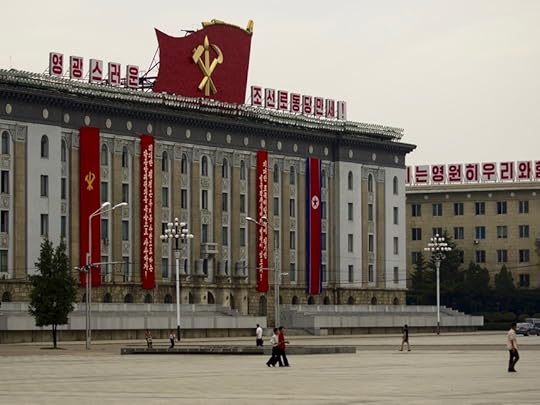 Asia PacificNorth KoreaKim Jong Un
Asia PacificNorth KoreaKim Jong Un
November 30, 2015
Time to Retaliate Against China’s Cyber Espionage

“To my Chinese counterparts, I would remind them, increasingly you are as vulnerable as any other major industrialized nation state,” said Admiral Mike Rogers, director of the National Security Agency and the chief of US Cyber Command, on November 21st at the Halifax Security Forum. “The idea you can somehow exist outside the broader global cyber challenges I don’t think is workable.”
That, in all probability, was not an observation. A year ago, it was inconceivable that an American four-star officer would talk like this—in other words, make a threat—in public.
The temperature over cyber matters in the American capital has risen fast in recent weeks. If there has been any reason for the change in attitude, it may well be China’s not honoring its agreement, reached while President Xi Jinping was in Washington in September, to stop cyber attacks for commercial espionage purposes.
“We haven’t seen any indication in the private sector that anything has changed,”said William Evanina, America’s chief counterintelligence official, a few days before Rogers’s remarks. His assessment is consistent with various reports from the private sector, including one from the security firm CrowdStrike.
Of course, it was never realistic for America to believe Beijing would,and the evident failure means American policymakers ought to take new steps.
For Senator John McCain, the next step is to impose sanctions on Chinese hackers,which he urged the administration to do in a series of letters two weeks ago. “The theft of economic data means the United States is footing the bill for the research and development of our enemies to acquire tools to be used against us,” the chairman of the Senate Armed Services Committee noted.“And this will continue until our adversaries understand that attacking and pilfering the United States in cyberspace is no longer a low-cost endeavor, but instead will carry real consequences, in the form of sanctions or otherwise.”
The Obama administration, in the weeks before Xi’s September visit, had been thinking of imposing a series of sanctions on Chinese entities and individuals. The measures had been leaked to news organizations, but ultimately the White House sought cooperation with Beijing instead, reaching the agreement during the summit with the Chinese leader.
With the deal apparently in tatters, the administration will be forced to do something it had hoped to avoid: impose punitive measures severe enough to have an effect. Each year, cyber espionage costs US businesses about $400 billion, and China, responsible for most of that, will not turn the spigot off until the cost exceeds the benefit.
As Admiral Rogers said, “None of us wants behavior on either side that ends up accelerating or precipitating a crisis.” Yes, but for American businesses there already is a crisis, and each year Americans have 400 billion reasons to make sure the Chinese realize they are in one too.
OG Image: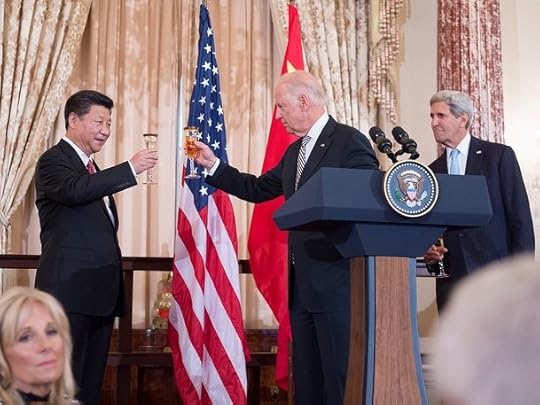 Asia PacificChina
Asia PacificChina
November 24, 2015
Suddenly, Dialogue with North Korea Is in Vogue
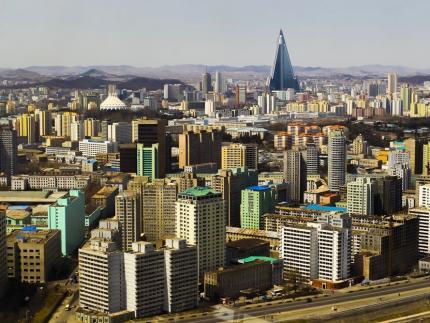
On Friday, Seoul’s Unification Ministry announced that North Korea had accepted the South’s invitation to hold a working-level meeting in the truce village of Panmunjom, in the Demilitarized Zone. The talks, scheduled for Thursday, are supposed to prepare the way for high-level discussions between the two Koreas, to be held in either Pyongyang or Seoul.
South Korea’s announcement comes in the immediate wake of failed attempts to arrange a historic meeting between UN Secretary General Ban Ki-moon and North Korea’s Kim Jong Un in Pyongyang. The get-together, which at one point looked like it would be held last week, never materialized. (Although Ban has just told South Korea’s YTN, a news channel, that the trip may still take place.)
The Unification Ministry’s announcement also comes after Beijing’s renewed push in September to restart the long-stalled six-party talks to “denuclearize” the North. Beijing has for years been trying to revive these discussions, which broke down in 2009 when Pyongyang walked away from them. South Korea’s chief nuclear envoy is now in the Chinese capital for consultations.
The new efforts at dialogue with Kim are taking place mostly without the US, which has adopted a policy of “strategic patience.” Critics bemoan what they characterize as Washington’s neglect, but the Obama administration’s disengagement is largely the result of the Kim regime’s bad faith, which caused the failure of the so-called Leap Day Deal of 2012. On February 29th of that year, the White House announced an agreement on missile launches and other matters, but Pyongyang quickly violated the terms Washington thought it had reached.
China’s efforts to renew ties with Pyongyang come at a time when relations between the two nuclear-armed states are suffering, largely because of the Kim regime, which began to downgrade ties at the end of 2013 with the execution of Kim’s uncle, Jang Song Thaek. Jang had served as the bridge between Pyongyang and Beijing, handling most dealings between the two capitals.
In addition to Jang’s abrupt departure, Kim’s executions of nearly 90 other senior political officials and military officers—not to mention the disappearances of an estimated 400 lesser officials—has eroded confidence in the regime’s stability.
There’s more. Choe Ryong Hae, Kim Jong Un’s emissary to Moscow, Beijing, and Seoul, has just disappeared from view. Significantly, his name was not included on the organizing committee for a state funeral held earlier this month. A South Korean spokesman said the omission of Choe’s name was unprecedented.The most recent reports indicate Kim had Choe “banished.”
No one outside a tight circle in Pyongyang knows for sure, but the disappearance of a high-ranking military officer, often considered the No. 2 figure in the regime, suggests further instability in the North’s ruling group.
Choe has been demoted before—some South Koreans have called him the “comeback kid” for his miraculous-looking reappearances—and banishments in North Korea are not always permanent, especially under the current Kim. Yet Choe’s apparent predicament suggests Pyongyang is not yet ready to be a reliable partner
Seoul’s diplomats may believe they can move from talks in Panmunjom to discussions at the highest level of both governments, but with North Korean officials disappearing without explanation, progress seems unlikely.
OG Image: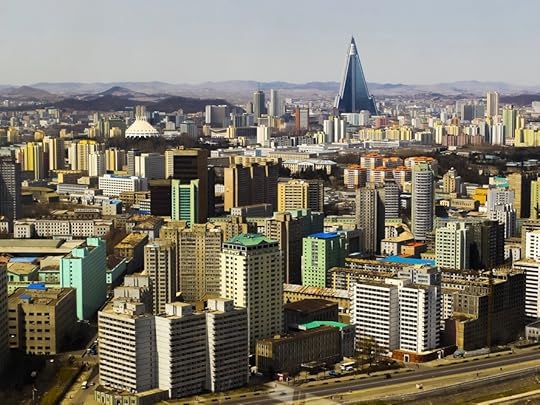 Asia PacificKoreaNorth KoreaSouth KoreaAsiaUNUN
Asia PacificKoreaNorth KoreaSouth KoreaAsiaUNUN
Suddenly, Dialogue with North Korea is in Vogue

On Friday, Seoul’s Unification Ministry announced that North Korea had accepted the South’s invitation to hold a working-level meeting in the truce village of Panmunjom, in the Demilitarized Zone. The talks, scheduled for Thursday, are supposed to prepare the way for high-level discussions between the two Koreas, to be held in either Pyongyang or Seoul.
South Korea’s announcement comes in the immediate wake of failed attempts to arrange a historic meeting between UN Secretary General Ban Ki-moon and North Korea’s Kim Jong Un in Pyongyang. The get-together, which at one point looked like it would be held last week, never materialized. (Although Ban has just told South Korea’s YTN, a news channel, that the trip may still take place.)
The Unification Ministry’s announcement also comes after Beijing’s renewed push in September to restart the long-stalled six-party talks to “denuclearize” the North. Beijing has for years been trying to revive these discussions, which broke down in 2009 when Pyongyang walked away from them. South Korea’s chief nuclear envoy is now in the Chinese capital for consultations.
The new efforts at dialogue with Kim are taking place mostly without the US, which has adopted a policy of “strategic patience.” Critics bemoan what they characterize as Washington’s neglect, but the Obama administration’s disengagement is largely the result of the Kim regime’s bad faith, which caused the failure of the so-called Leap Day Deal of 2012. On February 29th of that year, the White House announced an agreement on missile launches and other matters, but Pyongyang quickly violated the terms Washington thought it had reached.
China’s efforts to renew ties with Pyongyang come at a time when relations between the two nuclear-armed states are suffering, largely because of the Kim regime, which began to downgrade ties at the end of 2013 with the execution of Kim’s uncle, Jang Song Thaek. Jang had served as the bridge between Pyongyang and Beijing, handling most dealings between the two capitals.
In addition to Jang’s abrupt departure, Kim’s executions of nearly 90 other senior political officials and military officers—not to mention the disappearances of an estimated 400 lesser officials—has eroded confidence in the regime’s stability.
There’s more. Choe Ryong Hae, Kim Jong Un’s emissary to Moscow, Beijing, and Seoul, has just disappeared from view. Significantly, his name was not included on the organizing committee for a state funeral held earlier this month. A South Korean spokesman said the omission of Choe’s name was unprecedented.The most recent reports indicate Kim had Choe “banished.”
No one outside a tight circle in Pyongyang knows for sure, but the disappearance of a high-ranking military officer, often considered the No. 2 figure in the regime, suggests further instability in the North’s ruling group.
Choe has been demoted before—some South Koreans have called him the “comeback kid” for his miraculous-looking reappearances—and banishments in North Korea are not always permanent, especially under the current Kim. Yet Choe’s apparent predicament suggests Pyongyang is not yet ready to be a reliable partner
Seoul’s diplomats may believe they can move from talks in Panmunjom to discussions at the highest level of both governments, but with North Korean officials disappearing without explanation, progress seems unlikely.
OG Image: Asia PacificKoreaNorth KoreaSouth KoreaAsiaUNUN
Asia PacificKoreaNorth KoreaSouth KoreaAsiaUNUN
November 13, 2015
South Korea's Dual Agendas Undermine Allies' Unity

“It is our stance that freedom of navigation and freedom of flight should be ensured in this area, and that any conflicts be resolved according to relevant agreements and established international norms,”said South Korean Defense Minister Han Min-koo, referring to the South China Sea, in a recent news briefing with his American counterpart in Seoul.
The remark, made on the heels of a trilateral meeting in the South Korean capital among Premier Li Keqiang of China, President Park Geun-hye of South Korea, and President Shinzo Abe of Japan, was tentative. According to an account in the Wall Street Journal, “South Korean officials appeared eager to avoid the topic.”
Indeed, it took both President Obama, who chided Park during her visit to the White House last month, and Defense Secretary Ashton Carter, who was obliged to travel to Seoul, to convince South Korea’s government to stand with its regional allies and the US to challenge China’s expansive territorial claims in Asia’s international waters.
Park has been reluctant to criticize China because she doesn’t want to disrupt her bilateral efforts to secure China’s support on a range of other issues, from the denuclearization of North Korea to the reunification of the Korean state. Yet, however desirable those goals might be, freedom of navigation is vital to her country. The last thing Seoul needs is for Beijing to block an artery through which the hydrocarbons that power South Korea pass, along with imports and exports vital to its economy.
Likewise, Seoul has little interest in encouraging China’s expansive territorial ambitions. Beijing claims a submerged rock in the East China Sea that houses South Korea’s Ieodo Ocean Research Station, and Beijing’s proclaimed “air defense identification zone” in the area not only covers the skies over Ieodo, which is closer to South Korea than China, but closely abuts sovereign South Korean territory, including the islands of Marado and Hongdo just south of the Korean peninsula.
Park can be friends with everyone for only so long because Beijing, unfortunately for her, is forcing countries to take sides. And her choice will be significant. As Van Jackson of the Center for a New American Security perceptively writes, “Among Asia’s most meaningful powers, only South Korea is seen as having the potential to tilt toward Beijing’s preferences, making its voice on regional disputes even more important.” This makes Park’s decisions “a leading indicator of the future direction of the regional order.”
This month, South Korea chose the correct side, but only after what appears to have been a long arm-twisting campaign. Her defense minister’s comments, welcome but tepid, are a sign that Park will do the right thing, but only after other avenues are exhausted.
The region needs—and deserves—a better South Korea.
OG Image: Asia PacificChinaSouth KoreaNorth KoreaUSSouth China Sea Disputes
Asia PacificChinaSouth KoreaNorth KoreaUSSouth China Sea Disputes
China Militarizes the South China Sea
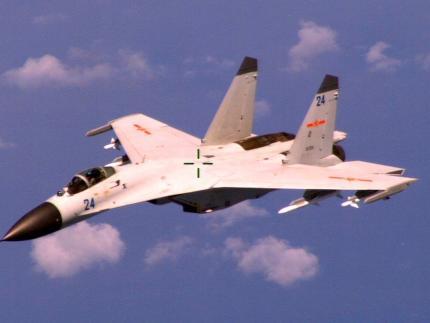
Photographs posted on Chinese websites late last month suggest the People’s Liberation Army is now basing its J-11 fighters on Woody Island, the largest of the Paracels, a chain of islands near Vietnam and China in the middle portion of the South China Sea.
The PLA might not keep the advanced fighters there long—the salty air degrades sophisticated planes quickly—but the introduction of J-11s on that island will surely cause alarm in the contested region for many reasons.
First, the PLA has recently stepped up the harassment of American reconnaissance planes along its coasts. Last year, for instance, a Chinese fighter intercepted a US Navy P-8 near Woody Island, drawing a protest from the Pentagon. And on September 15th, one of China’s jets intercepted a US Air Force RC-135 reconnaissance aircraft in international airspace over the Yellow Sea, which lies between China and the Korean peninsula. The Chinese jet recklessly crossed the nose of the American plane, within 500 feet, at high speed. With J-11s on Woody, we can expect more incidents in the future, as these Chinese jets will be more than 200 miles farther south into the South China Sea than they would be from their current airfields on Hainan Island.
Second, Beijing might use the J-11s to exert its dominion over the South China Sea by declaring an “air defense identification zone” there, as it did over the East China Sea in November 2013, largely without consulting neighbors South Korea and Japan.
The Chinese zone includes airspace over the Japan-administered Senkaku Islands, which Beijing once acknowledged as Japanese but now claims as its own. The self-proclaimed zone also includes the airspace over Ieodo, a submerged rock off the coast of South Korea. Seoul has built a research station there on stilts, but Beijing takes the position that it, too, is part of China.
In the South China Sea, such a zone would be even more contentious. China’s territorial claims overlap those of Taiwan, the Philippines, Brunei, Malaysia, Indonesia, and Vietnam. Moreover, China’s controversial official maps appear to claim about 85 percent of that body of water as Chinese. That apparent claim, which Beijing refuses to clarify, is inconsistent with both customary international law and the UN Convention on the Law of the Sea, which Beijing ratified in 1996. So the introduction of the J-11s is a warning that China will back its expansive territorial ambitions by airpower.
Third, the J-11 deployment puts Beijing’s ongoing charm campaign in an alarming context. In recent months, Beijing has sought to allay American suspicions about its activities in the Spratlys, an island chain in the southern portion of the South China Sea. There, it has reclaimed features from the sea—more than 2,900 acres since December 2013—and built them into sizable islands. Admiral Harry Harris, head of the US Pacific Command, has called them the “great wall of sand,” and in September, when Chinese President Xi Jinping visited President Obama in Washington, he promised not to militarize the Spratly chain.He made no promises about the Paracels, and now we can guess why.
China has just moved planes south into the South China Sea, and there are few indications Beijing will stop this process of militarization.
OG Image: Asia PacificChinaUSSouth China Sea Disputes
Asia PacificChinaUSSouth China Sea Disputes
October 30, 2015
Challenging China in the South China Sea

On Tuesday, the USS Lassen, an Arleigh Burke–class guided-missile destroyer, conducted a freedom of navigation exercise around Subi and Mischief Reefs in the Spratly chain in the South China Sea. Beijing had been huffing and puffing before the much-anticipated event but carried through on none of its implied threats to harass the vessel as it made its “transit,” which took it within 12 nautical miles of the reefs that China has made into island bases.
The US has said the sail-by is the first of many. “This is something that will be a regular occurrence, not a one-off event,” an American official told Reuters. So what will China do as Washington continues its centuries-old policy of defending freedom of navigation?
Perhaps we should ask Retired Rear Admiral Yang Yi. In anticipation of the exercise, the professor at China’s National Defense University had promised a “head-on blow,” but now he says his country will deliver one of those only if the exercises “become a regular thing.”
Maybe Yang is bluffing again, but Chinese military analysts have in fact been thinking about what a forceful response would look like. Sun Zhe of Tsinghua University, for instance, said the Chinese military could lock a fire-control radar on a US ship conducting a FONOP, as the transits are known in the Pentagon. The People’s Liberation Army Navy could also declare a drill in the area and use military or even civilian vessels to expel the US vessel, Sun notes.
How about a controlled bump? Li Jie, a Beijing-based naval analyst, takes inspiration from the Bezzavetny. That Soviet frigate attempted to nudge the USSYorktown while it was transiting Soviet water near the Sevastopol naval base during an “innocent passage” in the Black Sea in February 1988. At the same time, the USS Caron was also bumped, by a different Soviet frigate.
“China could also initiate a measured collision at the most critical moment if the US warship refuses to leave after being expelled,” Li told the South China Morning Post.
And these comments, even if not made at the direction of the Chinese Navy, are a warning. “Beijing has been quick to reach for the military instrument over the years,” writes James Holmes, a professor of strategy at the Naval War College and the co-author of the acclaimed Red Star Over the Pacific.
Now that China backed down over the Lassen’s passage this week, the assumption is that Beijing realizes its weaknesses and won’t do anything especially provocative. And some Chinese analysts share this view. Renmin University’s Shi Yinhong, a widely followed thinker, believes a confrontation between the US and China over the South China Sea is “almost impossible.” That assessment is comforting, but the PLA is full of hotheads, something evident from the reckless air and sea confrontations instigated by the Chinese in recent years—and this year as well.
Some of those incidents—especially air-to-air encounters over the South China Sea—are thought to be the work of a rogue unit in China’s Hainan Island, but the sea-to-sea ones appear to be the result of orders from the top. Therefore a Bezzavetny-style bumping could be in the cards when the higher-ups tire of seeing US warships sailing by their reclaimed shoals and through international waters claimed by the PRC.
Yes, Washington now has an agreement with Beijing over incidents at sea, but the deal is meaningless if the Chinese are determined to close off open waters and test American will.
OG Image: Asia PacificChinaMilitary
Asia PacificChinaMilitary
October 20, 2015
How Effective Is Obama’s Cyber Deal with China?

On Monday, Dmitri Alperovitch of CrowdStrike revealed that his firm had detected a number of cyber attacks from China since the White House’s announcement of an agreement with Beijing on the hacking of companies. “The primary benefit of the intrusions,” wrote Alperovitch, “seems clearly aligned to facilitate theft of intellectual property and trade secrets, rather than to conduct traditional national-security related intelligence collection which the Cyber agreement does not prohibit.”
CrowdStrike’s co-founder and chief technology officer stated there was an attack on September 26th, the day after the White House announcement of the deal, and that there had since been attempted intrusions on 10 more days. Seven of his firm’s tech and pharmaceutical clients had been the targets.
The White House, in conjunction with the state visit of Chinese President Xi Jinping late last month, had hailed its agreement with Beijing. And for good reason. On its face, the agreement looked like it solved a long-running problem. “The United States and China,” the September 25th announcement stated, “agree that neither country’s government will conduct or knowingly support cyber-enabled theft of intellectual property, including trade secrets or other confidential business information, with the intent of providing competitive advantages to companies or commercial sectors.”
Did China violate its clear pledge not to hack for commercial advantage? Most everyone assumes it did. The answer, unfortunately, is not clear.
CrowdStrike traced the attacks to a group it called “Deep Panda.” Deep Panda, as Bill Gertz of the Washington Free Beacon points out, is a unit of the People’s Liberation Army, specifically General Staff Third Department.
The People’s Liberation Army reports to the Communist Party’s Central Military Commission, not to the Chinese central government’s Ministry of National Defense, a unit of the State Council, often described as the country’s cabinet. The US-China cyber agreement only covers acts by each “government.”
Americans and others loosely refer to China’s “one-party state.” The Chinese, however, think of party and state as distinctly separate entities with the latter subordinate to the former.
The agreement, therefore, covers cyber attacks from, say, the Ministry of State Security, but so far it appears that the attacks traced by CrowdStrike were launched by the Chinese military. That is not surprising because in recent years it has been the People’s Liberation Army, not central government units, that has been identified behind the string of cyber crimes against American corporate networks.
For instance, the five Chinese individuals indicted in May 2014 for cyber espionage against American companies and one union were PLA officers.
Is this a distinction without a difference? Not if you’re a Communist. It may appear hyper-technical to foreign eyes, but the distinction to Chinese officials and cadres is fundamental. It goes to the heart of understanding China’s Communist system and its guiding ideology.
At the moment, probably no one in the US government knows whether elements of the Chinese government were in on the attacks on CrowdStrike’s clients, but it is unlikely largely because the PLA has a history of running its own operations without interference from unrelated—and subordinate—government units.
The Obama administration might argue the Chinese government “knowingly supports” PLA attacks, but even if it could prove that it did, state participation is a minor element in “China’s” determined effort to steal American corporate information for commercial purposes. The Chinese government of course knows what the PLA is doing, but politically it is in no position to stop Communist Party activities. The White House, at best, has an agreement binding a bit player in the cyber attacks.
Of course, the main problem for President Obama is that he made his deal with Xi Jinping, who as both president—head of state—and as general secretary—chief of the Communist Party—apparently never intended to keep his end of the bargain. In the words of Shi Yinhong of Renmin University, “Xi is obsessed with strategic rivalry with the United States.” As the oft-quoted Beijing academic warned us, the summit was never going to result in strategic progress. In the cyber realm, the meeting last month produced an agreement that would defer effective American action against China’s attempt to weaken the US. Nothing more.
“Call me an optimist, but I continue to have hope that meaningful progress can be made to turn the corner and establish norms of behavior for nation-states in cyberspace,” Alperovitch wrote in his Monday posting. Well, call me a pessimist, at least until Washington begins to understand Xi Jinping—and starts to read the fine print.
OG Image: Asia PacificNorth AmericaUSChina
Asia PacificNorth AmericaUSChina
October 13, 2015
Is a US-China Showdown in South China Sea Imminent?
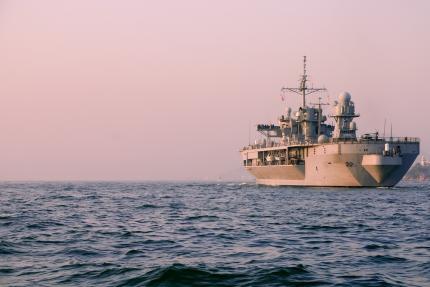
“We will never allow any country to violate China’s territorial waters and airspace in the Spratly Islands, in the name of protecting freedom of navigation and overflight,” said Chinese Foreign Ministry spokeswoman Hua Chunying at Friday’s regular news briefing. “We urge the related parties not to take any provocative actions, and genuinely take a responsible stance on regional peace and stability.”
Hua was evidently reacting to a Navy Times report that the US Navy was planning to send a surface combatant within 12 nautical miles of a Chinese island in the South China Sea in a bid to preserve freedom of navigation for itself and others.
In the Spratly chain, China has been dredging sand to transform shoals and reefs—some of them submerged—into artificial islands, now known as the “Great Wall of Sand.” Beijing claims those new islands are entitled to a 12-nautical-mile band of territorial water. The UN Convention on the Law of the Sea, which China has ratified, and customary international law permit a state to claim such a band only with respect to features that were visible above water at high tide before reclamation.
The US, which has not ratified UNCLOS, takes the position that it has the right to sail near or fly over the reclamations of once-submerged features under customary law.
American admirals, the Navy Times reported Thursday, are now hopeful about obtaining permission from the Obama administration for the Fonops, a freedom of navigation exercise or operation. As the paper stated, “Navy officials believe approval of the mission is imminent.”
Approval was not imminent in late July when Politico reported that the administration was not granting approval. Then, it appeared White House officials wanted to wait until President Obama had an opportunity to talk about China’s island building with his Chinese counterpart, Xi Jinping, during the state visit last month.
It’s not clear how those discussions went, but on Tuesday both the New York Times and Wall Street Journal reported that a Fonop will occur soon. The Times stated that US officials had briefed countries in the region of the plan to conduct such a patrol. “It’s just a matter of time when it happens,” a “US official” told the Journal.
Beijing, for its part, has been working overtime to prevent what it considers to be an incursion by the US Navy. In addition to Hua’s warning, the People’s Liberation Army has been adding its voice. Hong Kong’s South China Morning Post reported on Thursday that a “source close to the PLA” said that the Second Artillery, which is responsible for the country’s nuclear forces, could fire on an American ship should it conduct a freedom of navigation exercise.
Chinese hypocrisy—and arrogance—is breathtaking. Early September, five Chinese warships sailed within 12 nautical miles of one of the Aleutians without seeking permission to do so, apparently taking the position that their transit constituted “innocent passage.” So Beijing believes it has the right to intrude into American territorial waters and the US does not have the right to sail international waters close to China’s reclaimed features.
There are lessons for American policymakers here. The US has historically promoted a broad view of innocent passage as a means of defending freedom of navigation. Washington hoped that China would follow its example and similarly adopt an expansive view. That hope, by now, has been dashed.
Yet this is not just an issue of China disappointing America on rights to the high seas. Beijing’s blatant disregard of rules in this instance should prompt the rethinking of Washington’s long-term goal of trying to “enmesh” China into the international system by getting it to sign agreements. If Beijing does not think it is bound by obligations it has undertaken, then what is the point?
Yes, the US needs to sail close to China’s features in the Spratlys, even if Beijing gets upset, because Washington has to protect the global commons. More important, however, American policymakers should abandon the hope that aggressors will be tamed by rules, just because Americans think that would be nice.
Beijing just threw down a challenge to the rules-based international system. Washington needs to understand the implications.
OG Image: Asia PacificNorth AmericaUSChinaSouth China SeaSpratly Islands
Asia PacificNorth AmericaUSChinaSouth China SeaSpratly Islands
October 8, 2015
China Stock Crash Imperils Proposed Nicaragua Canal
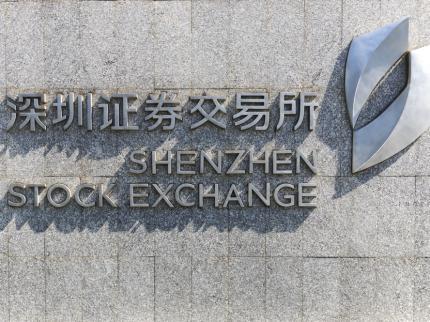
The net worth of Chinese entrepreneur Wang Jing, the driving force behind a proposed canal across Nicaragua, has fallen $9.1 billion since mid-June, when China’s stock market collapsed. No other individual in the Bloomberg Billionaires Index during this period has lost a greater proportion of assets, 84 percent in his case.
Chinese ambition in recent years has been stunning, and no person outside officialdom has been more optimistic than Wang, 42, who owns 35 percent of publicly listed Beijing Xinwei Telecom Technology Group Co.
In 2013, Wang announced he would build the waterway, three times longer than the Panama Canal. His plans also contemplated two deep-water ports, an airport, an artificial lake, a tourist area, a free-trade zone, roads, and factories to make cement and steel. Wang’s closely held vehicle, the Hong Kong Nicaragua Canal Development Investment Group Co., has an initial 50-year concession awarded by Daniel Ortega’s government.
Construction will start at the end of the first quarter of next year, according to Managua and HKND, as Wang’s company is known, but that now seems in doubt. It is not the many environmentalists and other opponents who are delaying the project.
Panama Canal Authority CEO Jorge Quijano believes Wang’s waterway, formally the Grand Inter-Oceanic Canal, will cost $67 billion to $70 billion. Current estimates put the tab at $50 billion. When he announced his mammoth plan, Wang said the project would come in at $40 billion.
Where will the money come from? During a December 2014 press conference in Nicaragua, Wang said he was going to use his personal resources to fund the project. HKND at the end of August said he had already put in more than 3 billion yuan (about $500 million before China’s August devaluation of the renminbi) from his “own pocket.” Those pockets are no longer so deep, and Wang could be overcommitted. He also has other projects needing cash, including a deep-water port in Ukraine.
HKND talks about raising money by “putting into play our imagination and creativity”—it’s never a good sign when builders get flowery—and perhaps selling shares. The company last month said it may raise funds in an initial public offering, but IPOs are indefinitely banned in China. In any event, given the dour outlook in global trade—2015 will be the third year in a row where the growth in world trade will be lower than global economic growth—it’s not entirely clear who would want to invest in Wang’s project, especially because Panama is completing a new set of wide locks to expand use of its canal.
“Wang hasn’t signaled whether banks might help with the financing,” Bloomberg reports, but project finance lending seems out of the question—the canal always appeared to be a dodgy financial proposition—and Wang no longer has sufficient collateral for a secured loan of the size needed to start construction.
“The turn of fortune in Mr. Wang’s financial resources will impact how and whether the canal can and will be built,” says Daniel Wagner of Country Risk Solutions. “I would expect, given this year’s financial gyrations in China, that the government is also asking itself whether the canal is a viable proposition.”
It probably never was. And neither are the many large-scale infrastructure projects that Beijing has announced, including those in Latin America. There, the “dry canal,” a railroad across Colombia, is in jeopardy, for instance.
Also at risk are President Xi Jinping’s “Silk Road Economic Belt,” which seeks to build a trade route through Central Asia, and his “21st Century Maritime Silk Road” initiative, designed to connect the great cities of China’s coast to Africa, the Middle East, and ultimately Europe. Beijing has been talking about funding the “One Belt, One Road” to the tune of about $1 trillion, yet in light of China’s stock crash and severe downturn in growth that appears increasingly unlikely.
Wang’s canal plan, which has always been a dubious proposition, was taken seriously because everyone thought China could do anything. Now, however, the country has lost its mystique, and it’s increasingly evident that Wang will not be able to start construction on time—and perhaps not at all.
OG Image: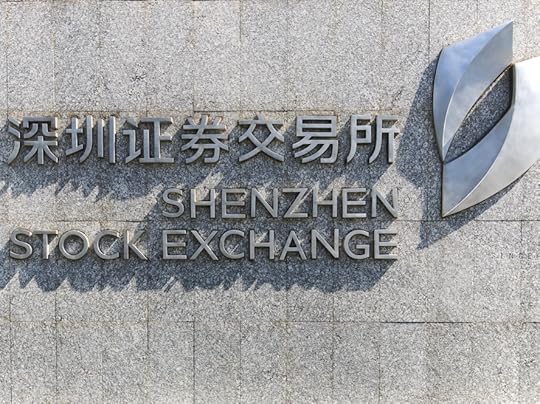 Asia PacificChinaNicaragua
Asia PacificChinaNicaragua
Gordon G. Chang's Blog
- Gordon G. Chang's profile
- 52 followers



